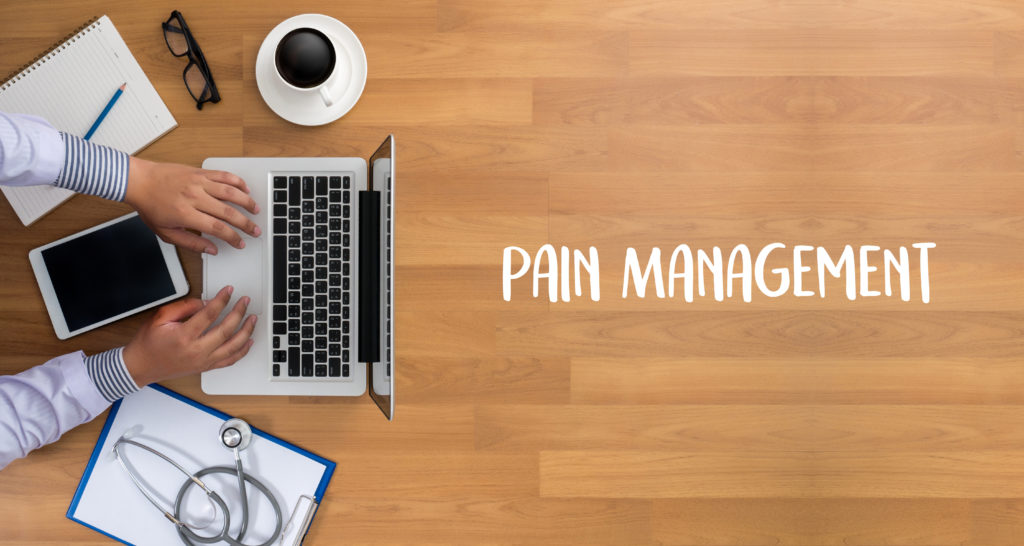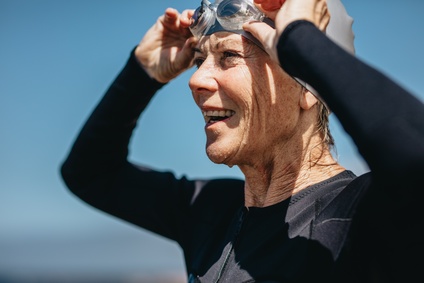Welcome back to learning about Pain!
Do you, or anyone you know, live with chronic pain?
Have you had it for months or years, in spite of the original injury being gone?
You may have tried many different therapies already, but results have been temporary at best…
It may help to check out “What is Pain?” – Pain Science: Part 1 on differentiating the different types of pain, as it provides some background into what Pain is and where Chronic Pain may come from.
When we talk about Chronic pain, what do we mean anyway? Does it describe a type of pain or a time period of having pain?
What do the terms Acute, Subacute, or Chronic mean?
When used in a hospital setting, the terms Acute, Subacute, and Chronic can refer to the urgency of your symptoms and medical condition. When you are seeing a physiotherapist and/or recovering from an orthopedic injury (sprain, strain, contusion, etc.) these terms can also refer to the duration of your symptoms, roughly reflecting the stages of the healing process:

- Acute: 0-4 days
- Symptoms may include: swelling, redness, high intensity pain, limited range of motion, muscle spasm, extreme weakness, inability to weight-bear (e.g. put weight onto a broken ankle), black and blue bruising
- Often, this is when people go to the emergency room, or see their family physician
- Our Oakville, Ontario Physiotherapists also see and treat people in the acute phase of an injury. We provide advise on if they should seek out more emergent treatment. We may provide gentle treatment that includes wrapping or supporting the area. A physio will also likely provide the most basic and gentle of exercises. Remember, as with anything it is not all or nothing. Your Physiotherapist should identify and diagnose your injury and provide treatment based on what you are experiencing in the moment.
- Subacute: 5-14 days
- The healing process continues but the body is still susceptible to reinjury
- Symptoms may include: formation of fragile scar tissue, some improvement in range of motion, some reduction in inflammation (swelling and redness), yellow and green bruising
- Often, this is when people will begin the rehab process with physio
- This can also be a time where as physiotherapists, we see people do too much too soon. Rehabilitation and physio will help guide you through these stages but typically in this stage there is also less pain. People will feel like they are ready to return fully to activity and it may set them back. It is a delicate dance!
- Post-acute / “Chronic”: >14 days
- Tissue is mostly healed; scar tissue is now maturing (no longer fragile)
- If symptoms persist, they tend to be: dull ache or pain, pain at movement end ranges

In this particular case, “chronic” does not refer to indefinite pain, but rather to how long the tissue takes to fully heal. This depends on the tissue and injury.
A Grade 1 muscle strain may take 2-8 weeks while a Grade 3 can take 9-12 months. Some tissues may continue remodeling for up to 2 years after injury, although at that point you should be pain-free. The remodeling of tissue depends more on your activity (what you use that tissue for).
However, when referring to a prolonged medical condition or disease progression, Chronic symptoms are often described as lasting for “longer than 3 months.”
So… what is chronic pain?
The World Health Organization (WHO) recognizes chronic pain as a “disease” in its own right, because it can be a serious comorbidity. As such, it can affect how patients fare post surgery, how they respond to medical treatment, and their overall quality of life.
Most chronic pain affects:
- Low back
- Neck
- Headaches / Migraines
- A specific joint (e.g. knee, shoulder, ankle)
- Nerve pain
Chronic pain often has many contributing factors. It can be due to any of the following:
- A medical condition: specifically, a condition which although manageable, is not curable (e.g. arthritis, auto-immune disorders, etc.)
- Acute recurring injuries: usually a recurrent sprain such as an ankle or the low back; due to high-intensity forces that happen quickly. They are referred to as “acute” because you may have no issues for a while, then do something specific that reignites the issue, triggering acute symptoms. Often a recurrent injury means that either the mechanics of movement are problematic, or the base level of strength is not up to par.
- Overuse injuries: usually a bursitis or tendonitis issue; due to low-intensity forces over a long time period. The issue never fully went away and continues to flare-up with repetitive activity. Overuse injuries indicate that the tissue being used has a low tolerance for “loading” (the specific way it is being used).
- Central Nervous System (CNS) sensitization…
CNS Sensitization
If you remember, the International Association for the Study of Pain (IASP), defines Pain as an “unpleasant sensory or emotional experience associated with actual or potential tissue damage.”
In Pain Science: Part 1 (link) we describe what CNS pain is like. We also talked about how the brain receives sensory information from its environment and then decides on the sensory experience.
That sensory experience is entirely reliant on how the brain interprets the incoming information.

Think about turning the neck to check a blind-spot, or bending down to unload the dishwasher. If you have pain with these movements even though it’s been months or years, would you say that the pain matches the activity? It shouldn’t. There is nothing dangerous about these movements. But after the initial injury, the CNS has become sensitized to certain movements or activities, and sends out pain signals to protect against what it considers to be dangerous for the body.
There is no such thing as imagined pain. All pain is real.
Whether it’s because of actual tissue damage, or because your brain perceives the potential for tissue damage. The problem is, this hypervigilance to protect us can impact our quality of life.
How Trauma Plays a Role…
After an injury, especially a traumatic one like a motor vehicle accident, as our tissues heal, a lot of other things are happening as well. We may have additional stress in our lives because we can’t work, or have a hard time looking after small children at home. If no one is there to help share the burden, or if we feel like we cannot “take a break” to look after ourselves because there is no time to do so, that stress can amplify our pain response.
Sometimes injuries and experiencing injuries brings us emotionally back to a time of trauma or when we feel that we did not have control. It may increase our symptoms with other mental health issues as well such as PTSD, anxiety and depression.
The emotions that arise from these situations are as just as much an output from the brain responding to what’s happening as the pain is. What’s more, the emotional state we are in has the power to amplify our physical sensations, pain or otherwise. Think about a time something really sad or scary happened. Did you not have a physical response? Your gut tightens, your posture slouches, your heart rate goes up, your breathing constricts, you may cry…
After a debilitating or traumatic injury, we can often fall into the trap of replaying the incident in our minds. We may have difficulty returning to where we experienced the injury or accident. The brain doesn’t necessarily make the distinction between past, present, or future. What is real in your mind is real for you now.
Continuing to replay injuries and the ensuing problems reactivates (and strengthens) the connections your brain makes between emotional state and pain.
While replaying situations can be normal as the brain looks to find solutions to something that bothers us, we have to recognize when a solution cannot be found in this way. Instead, we can accept that something bad and unpredictable happened, but it is done, and the present moment is what we do have power over.
Whether the incident was our fault or not, what we do afterward is in our hands.
We may also develop anxiety which affects our home life, relationships (with friends, family, workplace), recreational activities (sports, social events, or even something we enjoy doing on our own like art or gardening), and even our sleep quality.
Our relationships are our support network. It takes a village not just to raise our children, but to do anything. We are not meant to do it all alone!
Our recreational activities flood our system with endorphins (the body’s natural opioids), which believe it or not are often stronger than regular pain-killers. When we begin relying on the stronger medically-prescribed opioids, our bodies may actually start producing less endorphins.
This is why as physiotherapists we ask you about…you! We want to know what activities you enjoy and are looking to get back to. It is also why we encourage and support the return to these activities. We may need to modify them at first and set up a plan, but remember your goals are our goals.

Furthermore, our recreational activities are our stress-relief. Without them, we begin to live in more continuous stress and anxiety, and may even start to feel depressed.
All of this feeds back into the CNS and amplifies our pain.
Stay tuned for Part 3 of Oakville, Ontario Physio Kristinas series on pain science. This is where she looks to empower you if you experience chronic or persistent pain!
Kristina and our other Oakville, Ontario Physiotherapists are “seeing” their patients virtually via Telehealth. There are so many things a Physiotherapist can do to support and empower you if your are experiencing chronic pain. Contact us to book an appointment or to discuss if this type of virtual physio treatment is for you. We are able to treat patients from all over Ontario using secure technology. Virtual or tele rehabilitation is covered by most insurance companies!


